I assume you like to ride a motorcycle. I assume you don't like to be cold. Plug in some heated stuff and be happy, right? Sort of.
Making heated items jive with your rig can be a nightmare — but it doesn't have to be if you know how to do it correctly!
First, a disclaimer. We are going to gloss over some of the complexities of electricity for simplicity’s sake. We’re also going to err on the side of being conservative, because if you “steal” too much electricity, and it’s two degrees below zero in East Jabip where you are stranded, you will not be a happy rider.
There are really only two obstacles to overcome when deciding how to keep yourself warm on your bike. They are:
- How much electricity can you safely take from your bike?
- How can you turn that electricity into something that makes you warm (without causing an electrical fire)?
How much electricity can you spare?
A modern motorcycle usually supplies more electricity than the bike needs, depending on its stator output and battery. If you have a six-volt system or run a magneto, this article does not apply to you. Buy a modern bike, ya cheapskate.
For you folks on contemporary streetbikes: Your stator has the job of producing AC electricity, which heads over to your regulator or rectifier, where it is turned into DC current, typically between 13 and 15 volts. The charging system’s first job is to replenish the electricity that the battery used for (electric) starting. After that, it needs to keep the battery “topped off” while the bike runs. Now, if the system needs more electrical power (like, say, if you hit the brakes and light up the brake light), it’s there because the charging system sends a little more to the battery until it’s replenished.
That’s the (vastly simplified) theory, anyway. If you want to run heated gear, you need to know three things: your stator’s amperage output, how many amps your bike consumes when running, and how to “convert” between wattage and amperage.
Your stator’s output can be found in your factory service manual. That would be how much electricity you are producing. Keep in mind that stator output rises with engine rpm. Figure out your stator output at cruising speed in top gear, not the peak output.
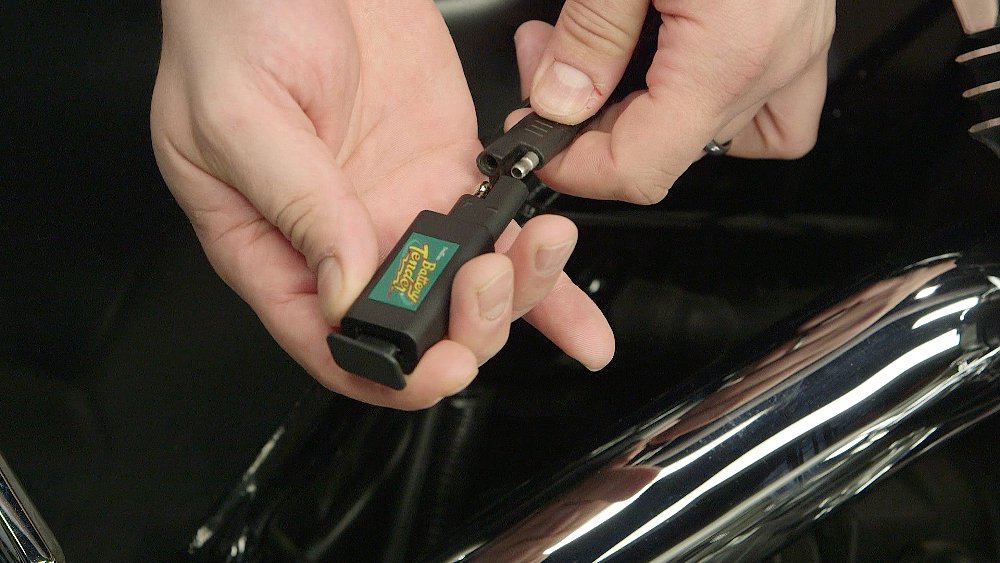
Finding how many amps your bike consumes while running is as simple as adding up all of the individual draws and calculating the total. (Some service manuals will have this info, but not all.) If you’re calculating things, don’t forget other accessories, like driving lights, you may have added. Most bulbs have common amperage draws. For instance, most H4 headlights eat up 55 watts on dip beam and 60 watts on the main beam. Most bikes will have a range, because there are some things that are on constantly, and others that are used intermittently or rarely. See the table for some common usage scenarios. Most modern fuel-injected bikes use 300 to 600 watts in peak scenarios.
| Item | Peak draw | Usage |
|---|---|---|
| Headlight (high beam) | 65 watts | Intermittent |
| Headlight (low beam) | 55 watts | Constant |
| License plate light | Five watts | Constant |
| Brake light | 20 watts | Intermittent |
| Tail light | 15 watts | Constant |
| Instrument Cluster | Three watts | Constant |
| ECU/ECM | 25 watts | Constant |
| Fuel pump | 60 watts | Constant |
| Cooling fan | 60 watts |
Usually intermittent during winter months |
| Ignition | 50 watts | Constant |
| Horn | 45 watts | Intermittent |
The difference between production and consumption is the magic number. That's the amount of juice you can safely use to power heated items without stranding yourself. The reason this is so important is because it usually takes a lot of electricity to power items that create heat.
(Power produced) - (Power used) = Excess power
The final piece of the puzzle is figuring out the draw of the items you want to use. In order to make it easy to figure out the electrical consumption of the heated items you may want to purchase, we post amperage consumption figures on each piece of heated gear, if we have it. (RevZilla provides maximum draw figures for heated items. We assume the gear is running as hot as it goes, again, in the interest of being conservative.) Simply add up the amperage of the stuff you want to use, and see if your bike will support it!
Directly converting watts to amps is not really possible. It’s like trying to convert cups to kilometers. But because bikes run at a very consistent voltage, you can calculate amps from wattage and voltage, and vice versa. Use these formulas:
- W = A x V
- A = W/V
Your voltage should be somewhere between 13.6 and 14.5 when the bike is running. For figuring power supplied, use 13.6 to be conservative, and when figuring power drawn, use 14.5 to err on the side of being careful.
When calculating, I like to leave a 10 percent margin or so for a few reasons. First, not every electrical system is completely efficient. A little corrosion on the battery terminals or a weak stator might yield less available juice. Secondly, it can be hard to start a bike in cold weather. You also may wait for the bike to warm up, and time spent idling is time when the electrical system is not producing maximum juice. Especially if your bike’s not in perfect tune, you want reserve battery power for multiple starts if necessary.
Let’s use an old chopper for an easy example exercise. Let’s pretend it’s stripped down, with a kicker and no turn signals. The only electrical it uses are for the ignition (about 50 watts), a headlight (55 watts constant, with a jump to 125 if both high and low beams are used at once) and a brake/tail light (about 25 watts with both filaments lit up). This particular bike has a 32 amp charging system, but that’s at 5,000 rpm. Specifications for this bike (it’s a Harley!) are 29 amps at 2,500 rpm. This bike usually runs at 2,700 rpm in top gear at 70 mph.
The bike produces 29 amps x 13.6 volts = 394 watts approximately, at cruising speed. It uses 50 + 125 + 25 = 200 watts. The difference between production and consumption is 194 watts, less a 10 percent margin of error, bringing the total working excess electrical capacity to 175 watts… that’s enough for a set of gloves (27 watts) and a jacket liner (77 watts) with capacity left over! With a few quick calculations on scratch paper from the comfort of your toasty house, you can quickly determine what you can reasonably power on your bike.
Other things you might want to consider
Some bikes just don’t have much extra electrical capacity. The Honda Rebel comes to mind, as do all flavors of the Suzuki V-Strom/WeeStrom/SV series. The charging systems are just not made to pump out much juice. If this is the boat you’re in, you can either lower your electrical draw (by using LED bulbs, for instance) or upgrade your charging system (install a high-output stator).
Some bikes actually discharge at idle. When you check your factory service manual, you may notice it will list a given output at a certain engine speed. If you do lots and lots of idling, lots of heated gear may actually leave your battery without a full charge.
If you have a bad electrical component, you will be hitchhiking. Your charging system needs to be in spec. You need clean connections, good ground paths, and a fresh battery to power your magical warming pants. A bad-enough battery actually eats up electrical output. The battery will never take a charge, forcing your poor stator to work overtime for the rest of its short life. And then it will die.
If nothing else in this guide sticks with you, please let it be this: A properly functioning charging system and battery are essential for running high-draw loads like heated gear on a motorcycle.
How to move power into your gear
Everyone has a different method of hooking things up. There is no industry standard, which makes things a little challenging right from the start. I generally use spade terminals for grips, and would also use them for a seat heater that was not wired with a Deutsch plug, as Harley-Davidson uses.
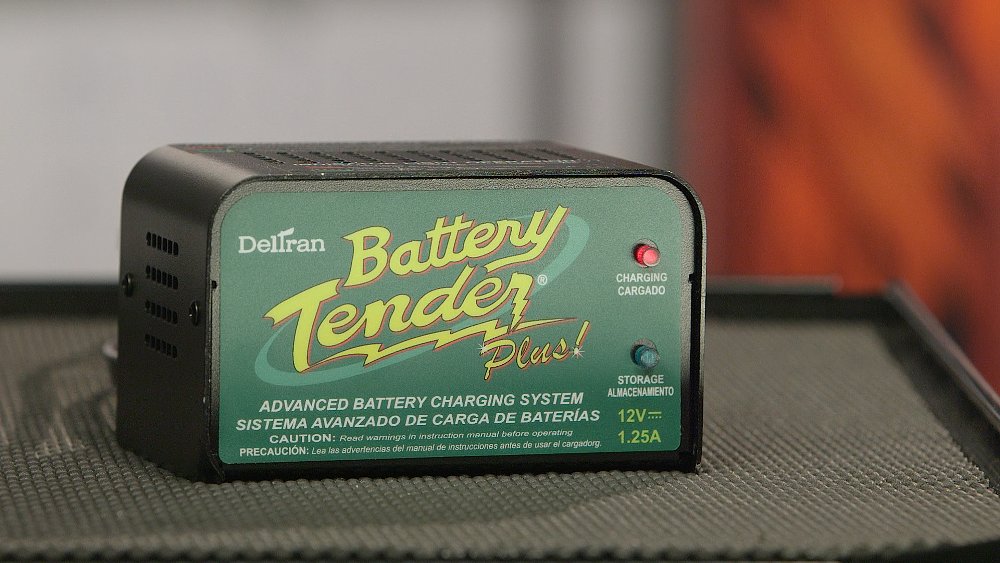
If you elect to go the route we take in our video and wire in a basic SAE connector, know that you can purchase nearly any configuration of adapter you might want. Different manufacturers recommend different things in regards to what should or should not be used with their components. This article is only outlining what is electrically possible. See your manufacturer’s guidelines for further information about what is recommended.
Let’s talk about the connector types. Heated gear is a simple circuit. (In fact, lots of heated gear simply acts as a controlled short, for those of you who are familiar with wiring.) Most well designed connectors are designed with a few simple principles in mind. First, they are designed so it is nearly impossible to switch polarity. (That means hook them up backwards, for you laymen.) They are also designed in such a way as to keep the hot side of the connector from ever making contact with the frame, which is often used as a ground path itself. Because of this, anything that receives power is usually male, and anything that gives power is typically female. Being that they are in use on motorcycles, most good, commonly used connectors try to incorporate at least some modicum of weather resistance.
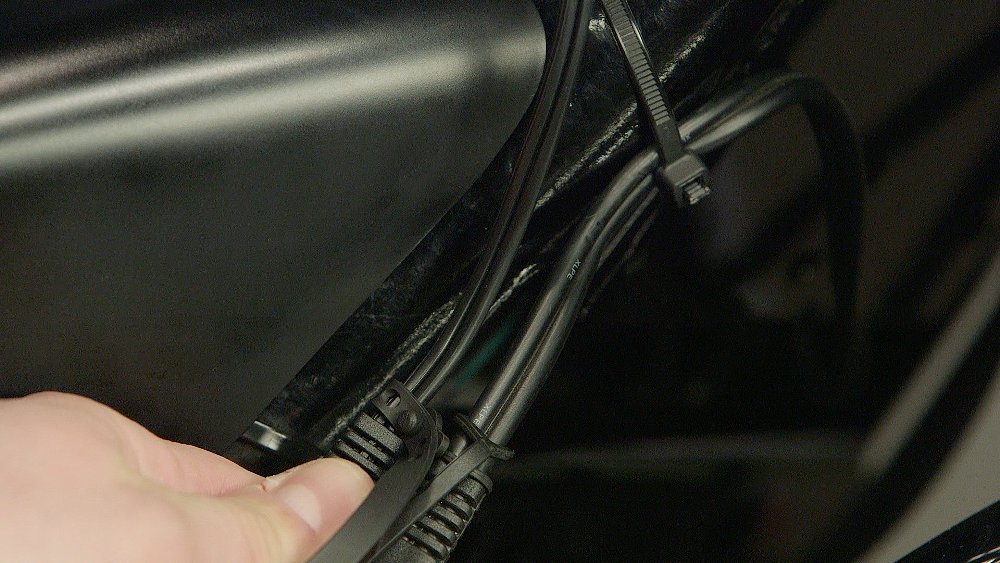
The most common type you’ll find on heated gear is the co-ax 2555 plug, named due to the dimensions of the plug. This is the most frequently used connector style on gear itself, including pieces by Firstgear and Tourmaster.
Powerlet also has a proprietary connector. Many BMWs have factory Powerlet ports, so that may influence your decision on what gear to purchase. SAE connectors are used on many Battery Tender leads to your battery terminals, and may even have been installed by the dealer you purchased your bike from. If you elect to use these, make sure the wire is of a sufficient gauge to power heated gear. The light gauge float-charger connectors aren’t gonna cut it.
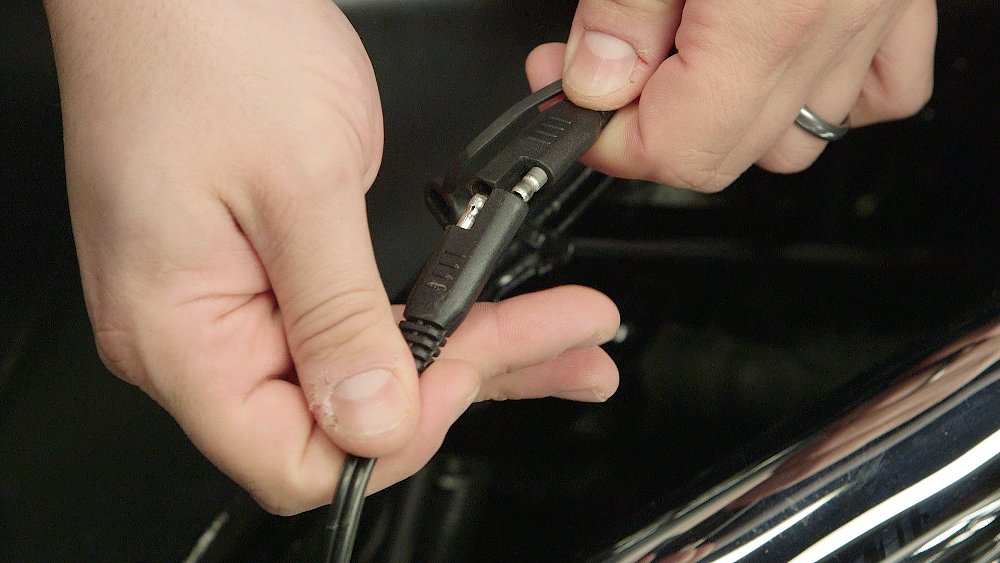
Late-model Harley touring machines have a pre-wired power port that makes installing a heated seat a snap. The connector is known as a Deutsch plug. Finally, snow machines that offer plug-ins for heated visors use RCA jacks — the same ones your stereo used in college.

Rather than have a bazillion wires coming off my battery terminals, I sometimes prefer to wire in a power distribution block, especially if I am trying to use a switched-ignition power source. Running allows one to use a heavy-gauge SAE lead and adapt to co-ax or USB as needed. One lead and a few adapters saves having leads running everywhere on the bike. This is the easy and simple option for most riders who want a solid, basic way to power heated stuff. Be sure you are not causing a fire hazard. You can also wire in a permanent receptacle, such as the one Powerlet offers. You may also want to supply your heated gear with ignition-switched power if you want to eliminate any risk of battery draw that a forgotten piece of gear could cause.
The final step you need to take is to fuse your power supply. Get the total amperage draw of all the gear you are running on the circuit(s), and use the next-larger fuse on your power supply wire, without exceeding the amperage of the fuse that was installed in the lead. If you’re running ignition-switched power from an unused or existing circuit, remember that the fuse the manufacturer provides for the circuit is the maximum. Don’t simply stuff a bigger fuse in there, or you risk a fire and your wiring loom’s health and safety. Always fuse the positive leg of the circuit, as close to the battery as is practical.
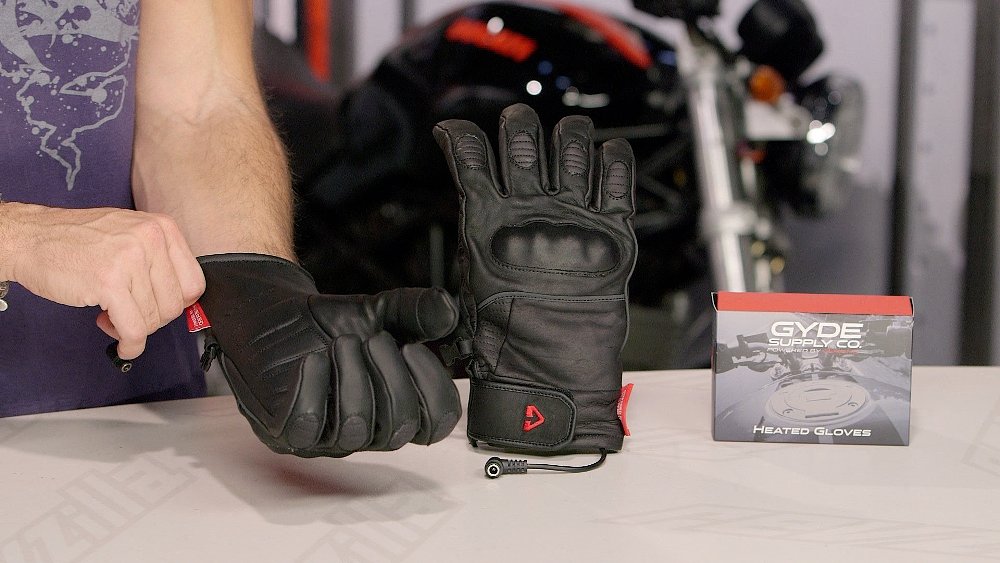
The toasty warm payoff
If you haven’t ridden with heated accessories before, it’s a real treat. I’ve been toasty warm with good gear and some heated gloves well below zero degrees. I wouldn’t even consider riding in those temps without it, and I’m a skinflint. If I think it’s worth the money and the effort, I’m betting many of you will be satisfied, too. If you need some help, you know the drill. Just like in all our tech articles, comment below, and either another rider will be along to help, or I shall. Of course, if you'd like to talk to someone warmer than I am, our Gear Geeks are pretty friendly.
I'll just show myself out.













